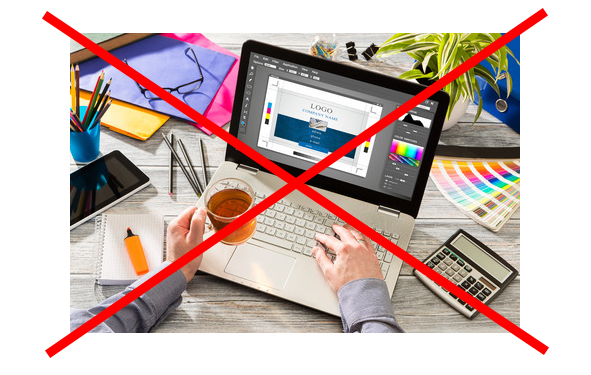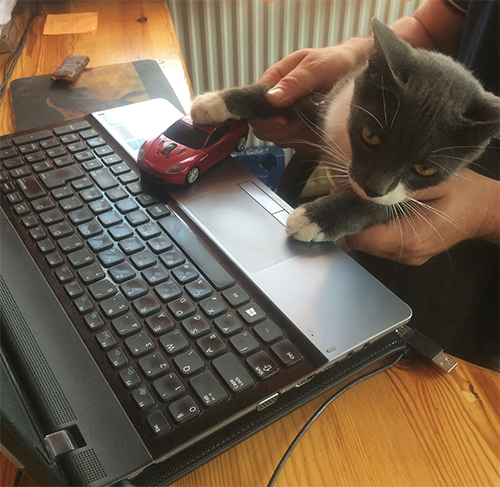10 quick tips to dramatically improve the user experience on your website | Weboptim
The most important purpose of a corporate website is to show your brand online. Nowadays, websites are often the first impression a visitor has of a brand. A good quality corporate website can leave a lasting impression on the visitor's memory. A poor quality site can often be the first and last encounter with a brand.
In many cases, the website itself is responsible for creating a positive or negative image of a company or brand in the mind of the visitor. Therefore, it is very important to examine each element of the website from the user's perspective and make improvements where we see that it is performing poorly.
Today, the website plays a more important role in the life of a company than ever before and can be one of the most effective marketing tools of all. With 24/7 availability, it attracts visitors and customers even when the office/shop itself is closed.
With rapidly changing technology and usage conditions, a website quickly becomes outdated. In some cases, a new design can help, but in many cases there is no way to avoid a complete overhaul. Whichever route you choose, we've put together 10 important criteria that you shouldn't ignore when you start developing your website.

1. Use (more) white space
Unfortunately, there is no really good Hungarian equivalent for white space. It refers to the empty spaces between the content elements of a web page. These are the empty spaces that our customers usually refer to as "there's too much unused space, let's put something there."
In fact, white space is a very important element of web design. On the one hand, it helps us to structure the content, i.e. to separate logically separate elements from each other, and on the other hand, it makes it much easier to read the information on the page. According to a recent study, white space can be used to increase the visitor's attention to a particular piece of text by 20%, which is why it is a common feature of today's modern and effective websites.
2. Website speed
For visitors, one of the most annoying things on a website is slow loading. This is particularly noticeable when browsing on mobile, where people are demonstrably more impatient, and mobile devices still lag behind fixed internet connections. That's why it takes even longer to wait for a web page full of multimedia content to load on mobile.
Statistics show that visitors consider a loading time of 2-3 seconds to be acceptable. Above 5 seconds, a website can lose 75% of its visitors. It is therefore essential to reduce the loading speed at all costs.

3. Use of attractive calls-to-action (CTA)
CTAs are usually colourful, prominent buttons or links on a web page that direct the visitor towards some kind of conversion (purchase, download, subscribe ... etc. ) within the page. A website that does not use CTAs will not be able to meet its marketing objectives.
A good CTA stands out not only in colour and form, but also in wording, which will capture the attention of significantly more visitors and thus dramatically increase website sales.
4. Use different types of links
Nowadays, the text of most links is still something like "click here". Research on user experience has shown that if you use more conversational, colourful and eye-catching links, you will achieve higher click-through rates, similar to the CTAs above.
If you want to perfect your technique in this area, try different link colours, texts and formatting and measure their performance. Lightning will quickly find the most appealing solution for your target audience.
5. Listings instead of bulk text
The listings are easy to digest, well structured, and use short sentences to draw attention to the benefits of a product or service. Listings are easy for visitors to read and absorb, so feel free to use them.
6. Use more of your own pictures
People are becoming more and more adept at judging the quality of a website based on content and aesthetics alone. In addition, the majority of visitors are able to distinguish between a purchased stock photo and an image they have taken themselves. The former, i.e. stock photos, have been shown to convey a lower level of trust in the site, and it is therefore recommended to avoid their use.
Nowadays you can find many web photographers who specialize in creating unique product, office, profile pictures for your website at low cost. Don't try to get away with cheap photography by selecting unimpressive stock images, as they will definitely have a negative impact on your website's reputation in the long run.


7. Pay more attention to the text of titles
Visitors to websites read by scanning. This means that they don't read all the content on the page, but rather scan the text looking for snippets of information that might interest them and grab their attention.
You can promote information retrieval by scanning and reading by breaking up your longer texts with headings or using conversational headings that reflect the text.
8. Maintain consistency throughout the website
Consistency across all pages of the site means that the same style is used for titles, header, footer, font, spacing, icons, images ... etc. So all elements are built from a single identity and this is maintained wherever the visitor goes on the site.
A consistent look lets visitors know they're on the right page, they recognise the brand and that's an absolute vote of confidence.
9. Handle your 404 error pages
Edits to a website result in the disappearance of pre-existing content, which can live on in Google's system for a long time. If you click on these articles, Google will navigate you to a non-existent page where you will only be confronted with an error message. It's very annoying and also means a strong loss of trust in the brand.
But there is an effective solution to this: create a 404 error page within the site, which aesthetically and verbosely informs the visitor that something is wrong and offers some options for viewing similar but existing pages.

10. Make the site responsive and mobile-friendly
Not only Google, but many other sources have been reporting for years drew attention to, that websites need to be made mobile-friendly to cope with increasing mobile views. Despite this, the number of non-responsive or non-mobile friendly websites is still very high in some industries.
A non-responsive website on mobile is displayed with tiny fonts, tiny buttons and an unmanageably small menu bar, meaning it is unreadable without constant zooming in, zooming out and scrolling left and right. Sooner or later, the visitor will run out of patience and look for another site, probably choosing a competitor.
Summary
With these ideas, I hope I have put together a to-do list that will give you a good direction on how to improve your website.